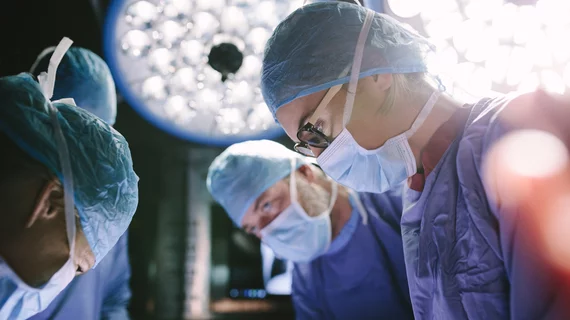Surgical occlusion of the left atrial appendage is associated with a lower stroke risk after heart surgery among patients with atrial fibrillation (AFib) or atrial flutter, according to new data presented at ACC.21, the American College of Cardiology’s 70th annual scientific session.
The study, which was also published in the New England Journal of Medicine, included more than 4,800 patients receiving care at one of 105 participating centers in 27 different countries. The mean patient age was 71 years old. Every patient had been previously diagnosed with AFib or atrial flutter, and they all had a CHA2DS2-VASc score of two or higher, which suggests they were at a heightened risk of stroke
All patients were randomly assigned to either undergo or not undergo left atrial appendage occlusion (LAAO) during a previously scheduled surgical procedure. Overall, the authors found, LAAO lowered the risk of stroke or systemic embolism by 33% in patients with AFib or atrial flutter.
In fact, the trial was stopped early due to the strength of the benefits of LAAO.
“This study confirms a new paradigm for stroke prevention for patients with AFib,” lead author Richard Whitlock, MD, PhD, a cardiac surgeon at McMaster University in Ontario, Canada, said in a statement. “The additive benefit of surgical LAAO on top of blood thinners has now been proven. There is no question that patients who are undergoing heart surgery and have elevated stroke risk and AFib should have their atrial appendage occluded in their cardiac surgery.”
The team’s results were consistent across the board. Also, LAAO was found to only add less than ten minutes to the total procedure time.
“This is a procedure that’s done once, and it keeps giving a benefit over time,” Whitlock added. “This is going to prevent thousands of strokes.”
Read the full study here.
Additional coverage from ACC.21 is available here.

